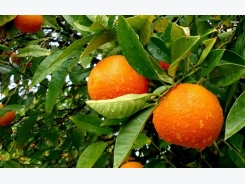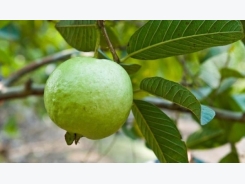Apple Cultivation Information Guide

Introduction of Apple Cultivation: – Well, apple is one of most commercially grown table and temperate fruit crop in the world after banana, orange and grapes. China tops the apple fruit production in the world. Apple has excellent health benefits, hence it is recommended for daily consumption. Apples were originated in Europe and Western Asia and spread across the world. Seed grown apple trees are large in size when compared to root stock (grafted onto roots). Apple tree belongs to the family of “Rosaceae” and genus of “Malus”. There are more than 8000 varieties/cultivars of apple all over the world. The apple is a deciduous tree which can grow up to 15 to 16 feet tall. The wild apple trees can reach up to 40 feet. However, the size and shape of the apple tree are determined by root stock selection and trimming (Pruning) method. Soil, climate and orchard management practices are common factors that influence the commercial farming of apple fruit. Apples can eaten raw or used as an important ingredient in many desserts like apple pie, apple crumble, apple crisp and apple cake apart from using in beverages (ciders and juices). Organic apple farming is also possible in some of the regions. One can go for high density apple plantation for getting more yields.
Health Benefits of Apple: – The following are the health benefits of apples.

Health Benefits Of Apple.
- Apples lower cholesterol and good for heart health.
- Apples are good for skin health and dental health.
- Apples aid in weight loss.
- Apples are good for digestive health.
- Apples boost your immune system.
- They decrease the risk of diabetes.
- Apples are good for brain health.
- Apples may prevent certain types of cancers.
- Aids in treating Anemia.
- Apples may prevent Alzheimer’s and Parkinson’s disease.
Common Names of Apple: – Apple.
Top Ten Apple Production Countries: – The following are top ten apple production countries in the world.
- China
- USA
- Turkey
- Poland
- Iran
- Italy
- France
- India
- Russia
- Brazil.
Local Names of Apple in Other Parts of World:- Appel (Afrikaans), Appel (Dutch), Apfel (German), Alim (Mangolian), Jabłko (Polish), Aipple (Scottish), Tufaax (Somali), Seb/سيب)Urdu), Mollë (Albanian), Jabuka ( Bosnian), Mansanas (Cebuano), ÕUN (Estonian), Μήλο (Greek),úll (Irish), 사과 (Korean), Tuffieha (Maltese), Maçã (Portuguese), Jabuka (Serbian), Manzana (Spanish), Olma (Uzbek), فاябълка ( Bulgarian), píngguǒ (Chinese), Mansanas (Filipino), Mela (Italian), Eple (Norwegian), Chomphu (Thai), Táo tây (Vietnamese), Խնձոր (Armenian), Jabuka (Croatian), Omena (Finnish), תפוח) Hebrew), Ringo/りんご (Japanese), Ābols (Latvian), Măr (Romanian), ඇප� (Sinhalese), Afal (Welsh), េ䐞៉ ម (Cambodian), Jablko (Czech), Pomme(French), Sev (Hindi, India), Jabolka (Macedonian), Яблоко (Russian), Jablko (Slovak), äppel(Swedish), Elma (Turkish), Píngguǒ (Cantonese), æble(Danish), Vashli (Georgian), Alma (Hungarian), Epal (Malay), Sīb (Persian), Jabolko (Slovenian), Phoxngkor (Taiwanese), Yabluko (Ukrainian), تفاح) Arabic).
Varieties of Apple: – There are more than 8000 varieties grown across the globe. However, the most famous varieties of apple are; Cortland, Golden Delicious, Empire, Fuji, Red Delicious, Pink Lady, Gala, McIntosh, Ida Red, Macoun, Winesap and Northern Spy.

Main Apple Varieties.
Climate Requirement for Apple Cultivation: – Climate (Temperature and sunshine) is the main factor that affects development of apple fruits. Usually, apple trees require certain minimum chilling period for optimum growth and quality fruiting. It is recommend having 1000 chilling hours at below 7°C for best growth and yield. These conditions depend on the cultivar. However, extreme cold temperature will damage the apple crop. Abundant sunshine is required in growing apples since it is responsible for good fruit colour development. Apples can be cultivated at 1500 to 2600 meter above mean sea level (msl). Apple orchard requires on an average 20°C to 25°C during growing period along with 100 to 130 cm evenly distributed annual rainfall. Heavy rain fall or fog during fruit maturity will result in improper apple fruit development. Avoid growing apples in areas where heavy winds are expected.
Soil Requirement for Apple Cultivation: – Apples can be grown in most of the soils. However, the best suitable soils are well-drained deep loamy soils rich in organic matter having pH value 5.5 to 6.5 with good aeration. Commercial apple growers should go for soil test and based on test results, any micro-nutrient gaps in soil should be incorporated.
Land Preparation for Apple Cultivation: – Land should be well-drained and deep with proper layout proposed for commercial farming of apple. Level the proposed layout by giving deep ploughings and remove any weeds from previous crops. If you are planning for commercial cultivation of apple on large scale, it is advised to for soil test to find out the soil fertility and suitability. Along with organic matter, any deficient micro nutrients should be supplemented as part of soil preparation.
Propagation in Apple Cultivation: – Usually, propagation of apple tree is done through the budding and tongue grafting methods. Commercial growers should be careful in selecting the planting material. Planting material should only from the registered/genuine nurseries. When these nursery grown plants are ready for transplantation in main filed, proper care should be taken during transportation
Planting Apple Cultivation: – When it comes to planting season, apple trees are generally planted in Jan and Feb months. The system of planting is followed in apple cultivation is square or hexagonal. In case of valleys, contour planting of method is followed on the slopes. Planting pollinator in between main plantation is required for proper apple fruit setting. For planting, dig the pits of size 1 meter x 1 meter x 1 meter. Mixture of well decomposed farm yard manure (FMY) of 35 kg and 500 grams of single super phosphate and 50 grams of malathion dust should be incorporated in each pit. Carry out irrigation immediately after planting is done.
Spacing in Apple Cultivation: – Spacing between plants depends on variety and method of planting followed. Generally, 1 hectare land can accommodate in the range between 250 and 1200. There are four types plant density can be followed. The Ultra high density (UHD) planting method accommodates more than 1200 plants per hectare and High density planting method (HD) accommodates 500 to 1200 plants per hectare. When moderate density is followed, this will accommodate around 250 to 500 plants per hectare land where in low density planting method the number plants are less than 250 per hectare.
Irrigation in Apple Cultivation: – The apple plantation requires 115 cm to 120 cm of water per year. This amount can be scheduled in about 20 irrigations. Irrigation should be carried out immediately after planting is done. In case of heavy floods or rains, make sure to drain out the water quickly. Generally, in summer or hot days, provide irrigation at an interval of 7 to 9 days and winter season at an interval of 4 weeks. There is no need of irrigation in rainy season. The critical stage of irrigation is after fruit set. Minimum of 8 to 9 irrigation are required during this critical period. Drip irrigation can be followed in apple orchard as drip system has many advantages. In some countries like India, Government subsidy schemes are available on drip irrigation system.
Manures and Fertilizers in Apple Cultivation: – Timely application of organic and in-organic fertilizers result in good fruit set in apple plantation. Apple trees respond very well these nutrients. When it comes to manures to be used in orchard, well decomposed farm yard manure of 8 to10 kg/year/tree should be applied along with other fertilizers. The N: P: K of 70:35:70 grams/year per tree should be applied for optimal fertility requirement. Each year, these manures and fertilizers should be increased based on tree age. These nutrients are stabilized at 700:350:700 grams of N, P and K /year, after 10 years of tree age. Any deficiency of zinc, boron, manganese and calcium should be corrected with the application of appropriate chemicals through foliage spray

Growing Bonsai Apple Tree.
Training and Pruning in Apple Cultivation: – Training and pruning are essential tasks needed for setting proper orchard framework. This also results in good plant growth and high productivity. Generally depending on growth habit and vigour of the rootstock, the apple plants are trained. The modified central leader system is followed for training to receive abundant sunshine/light which is critical for proper fruit set and colour. Spindle bush system can also be follow for high density planting (HDP) under mid hill conditions.
Weed Control in Apple Cultivation: – Give frequent shallow cultivation between rows and use mulch material at plant base to supress the weed growth. Weeds can also be controlled by chemical means. Apply glyphosate @ 800 to 850 ml./ha.as post emergence herbicide to suppress the weed growth for four to 5 months.
Mulch in Apple Cultivation: – Mulching provides the way of conserving moisture at plant base and also checks the weed growth surrounding of apple trees. Plastic mulch or any other natural mulch material like hay, dry leaves or dry grass can be used.
Inter-crop in Apple Cultivation: – Inter crop provides the best way to earn some extra income by using the space between in the plants. However, this is good for only some initial years. During 2 to 3 years, inter crops like green beans, green gram, black gram or sunflower can be cultivated. The fertilizer and irrigation requirement is separate from main crop. The other advantage of inter crop is, this can improve soil texture and fertility.
Growth Regulators in Apple Cultivation: – To induce good flowering and fruit colorization, growth hormones are required especially in heavy bearing in apple trees. Carry out fruit thinning is required task in pollinizing varieties for regulating adequate cross-pollination. carbaryl or Sevin @ 750-1000 ppm can be used to serve the purpose.
Pests and Diseases in Apple Cultivation: – Controlling of pests and diseases in any crop is one of the major tasks for good yield and quality.
Pests: The most common pests found in apple orchard are Scales, Aphids, and Thrips.
Control Measures: These pests can be prevented from selecting pest resistant rootstocks for commercial apple cultivation. One can also follow proper intercultural operations along with spraying with chloropyriphos, fenitrothion, carbaryl for effective control of these pests.
Diseases: The most common diseases found in apple farming are sclerotius blight, collar rot, apple scab, cankers and crown gall.
Control Measures: Selecting disease resistant and quality rootstocks can prevent most of these diseases. However, destroying infected apple plants and using chemicals like carbendazim, mancozeb other fungicides found to be effective in controlling these diseases.
Note: Your local horticulture department is good source for finding suitable solutions for controlling pests and diseases in apple gardens.
Harvest in Apple Cultivation: – Apple orchards start bearing fruits from 7th or 8th year. However, it all depends on the cultivar selected. Usually, the economic life of an apple tree is more than 35 years. When it comes fruit yield, fruit yield increases from 8th year to 18 year and thereafter remains stable (constant) for 30 to 35 years. Some varieties even produce apples after 35 years based on agro climatic conditions and variety chosen. Make sure to pick the fruits before they are fully ripe.

Ready to Harvest Apples.
Post-Harvest Tasks in Apple Cultivation: – Pre-cooling, grading, storage, packing, transportation and marketing are the post-harvest tasks to be followed in apple cultivation.
Yield in Apple Cultivation: – Yield of apple crop depends on factors like cooling, sunlight (agro-climatic conditions), soil and cultivar. On an average 10 to 15 tonnes per hectare can be obtained.
Related news
Tools

Phối trộn thức ăn chăn nuôi

Pha dung dịch thủy canh

Định mức cho tôm ăn

Phối trộn phân bón NPK

Xác định tỷ lệ tôm sống

Chuyển đổi đơn vị phân bón

Xác định công suất sục khí

Chuyển đổi đơn vị tôm

Tính diện tích nhà kính

Tính thể tích ao



 Gooseberry Farming (Amla) Information Guide
Gooseberry Farming (Amla) Information Guide  Guava Cultivation Information Guide
Guava Cultivation Information Guide